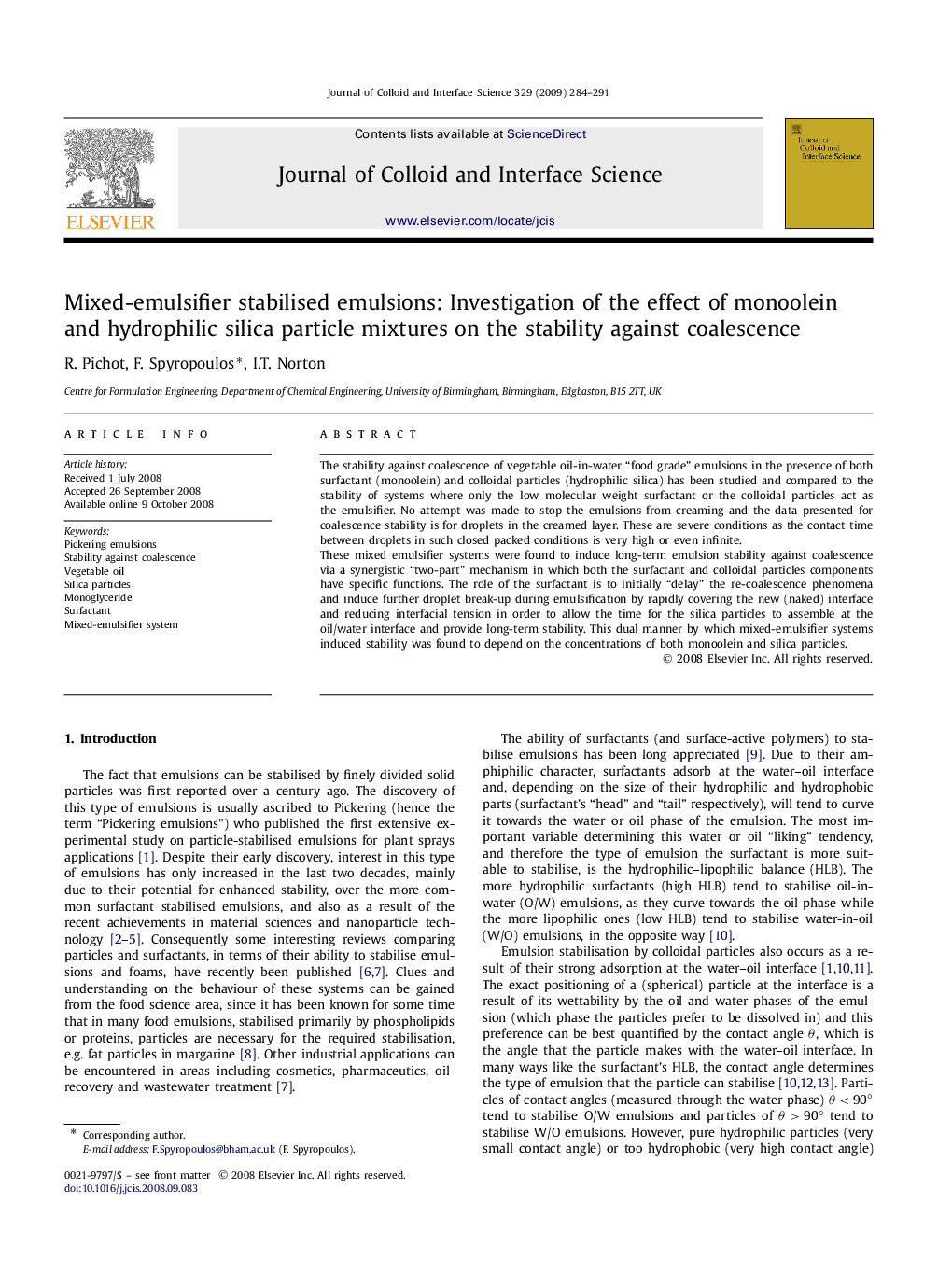| Article ID | Journal | Published Year | Pages | File Type |
|---|---|---|---|---|
| 610705 | Journal of Colloid and Interface Science | 2009 | 8 Pages |
The stability against coalescence of vegetable oil-in-water “food grade” emulsions in the presence of both surfactant (monoolein) and colloidal particles (hydrophilic silica) has been studied and compared to the stability of systems where only the low molecular weight surfactant or the colloidal particles act as the emulsifier. No attempt was made to stop the emulsions from creaming and the data presented for coalescence stability is for droplets in the creamed layer. These are severe conditions as the contact time between droplets in such closed packed conditions is very high or even infinite.These mixed emulsifier systems were found to induce long-term emulsion stability against coalescence via a synergistic “two-part” mechanism in which both the surfactant and colloidal particles components have specific functions. The role of the surfactant is to initially “delay” the re-coalescence phenomena and induce further droplet break-up during emulsification by rapidly covering the new (naked) interface and reducing interfacial tension in order to allow the time for the silica particles to assemble at the oil/water interface and provide long-term stability. This dual manner by which mixed-emulsifier systems induced stability was found to depend on the concentrations of both monoolein and silica particles.
Graphical abstract“Food-grade” O/W Pickering emulsions stabilised by a mixed-emulsifier system containing surfactants and colloidal particles is investigated. Long-term stability and emulsion droplet size reduction are induced by a synergistic “two-part” mechanism.Figure optionsDownload full-size imageDownload as PowerPoint slide
